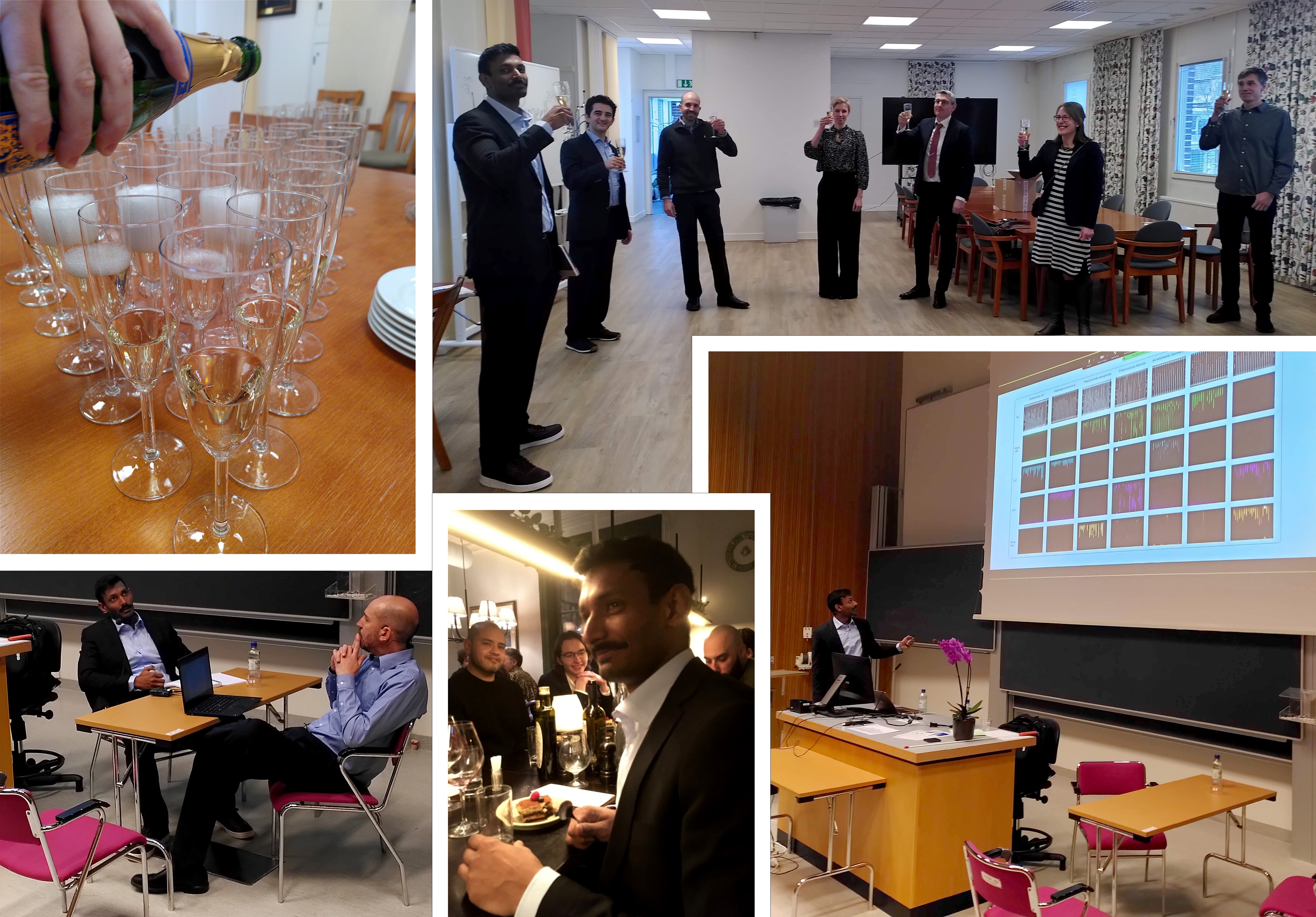POSTS
Expanding the scope and scale of single-cell microbiology
Some thesis defenses are tedious affairs. The defense of Praneeth Karempudi was not. We have to attribute some of the credit for this brilliant performance to the opponent, Yoav Shechtman, who possessed both the breadth and the depth to scrutinize Praneeth’s thesis, and the right amount of humor to keep the audience awake. But the star of the show was arguably Praneeth himself, who kept his cool and argued his way out of most of the logical traps Yaov set for him. There was some confusion as to how many ways you can actually tilt a plane, but these minor hick-ups are easily forgotten when pondering the spectrum of science that Praneeth and Yoav discussed; from microfluidics fabrication techniques and chip design, through antimicrobial resistance and microbiology, all the way to cell segmentation and tracking using neural networks. That the committee took their good time to reach a verdict had nothing to do with any shortcomings on behalf of Praneeth, but was rather due to an excessive intake of mayonnaise, Sherry, or quite possibly both. Finally, we could all toast to the bright future of Dr. Parneeth Karempudi!

In his own words, Praneeth’s thesis is “an engineering, computational, and experimental exercise in expanding the scope and scale of phenotype-genotype mapping in single-cell biology”. This is an excellent summary of the work that spans several scientific disciplines.
As an engineer, Praneeth has designed new microfluidics tools to grow thousands of different bacterial strains side by side and follow them through time. A crucial feature of this new tool is the option to remove interesting strains from the growth chamber for further study. The isolation process is done with an optical tweezer.
Following thousands of cells, and the molecules inside them, through generations is computationally intense. To make it feasible to study biological processes on this scale, Praneeth has developed deep-learning-based single-molecule localization methods as well as cell segmentation algorithms. The analysis can be performed as the experiment runs, which is a prerequisite to isolating interesting strains based on their phenotypic appearance.
The experimental exercise is profound throughout the work but may be most evident in the antibiotics susceptibility test that Praneeth developed with postdoc Vinodh Kandavalli. The test features a FISH-based ID step, which makes it possible to susceptibility test samples with multiple pathogens in a few hours. This method has a potential use case to test patients with sepsis. For acute sepsis infections, rapid identification of an effective antibiotic can be the difference between life and death.
Read Praneeth’s thesis here